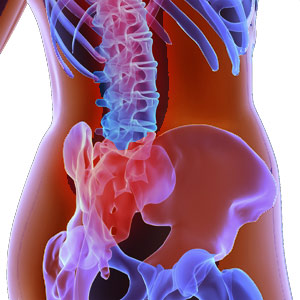Vaginal Discharge

It starts a year or two before puberty and ends after menopause. Felt some days and not all days. Sometimes slight, sometimes profuse, sticks to the underwear, makes her feel uncomfortable and necessitate the use of panty liners. Yes, it is all about vaginal discharge. All women of reproductive age have vaginal discharge. To have a dry, vaginal environment is uncommon. A slight vaginal discharge is natural and very common.
The amount of vaginal discharge considered normal varies from woman to woman. From time to time, vaginal discharge fluctuates. Check out what contributes to vaginal discharge fluctuation. Understand the physiological process in a woman's body. Differentiate normal and abnormal vaginal discharge, associated signs and symptoms and the causes for excessive vaginal discharge. Check out why it is important to see a doctor if the discharge is yellow or green in color, is clumpy like cottage cheese or has a bad odor.
Vagina and vaginal discharge
Vagina is approximately 4 inches in length and 1 inch in diameter. It is distinctively multi-functional - an outlet for menstrual flow, a copulatory organ, a repository for sperm and the birth canal. Teen girls may notice vaginal discharge about 6 months to a year before the first period. It continues even after the periods until menopause, a time when a woman's body doesn't make much of it.
Made up of a combination of fluid, cells and bacteria, vaginal discharge is shed through the vagina. It serves many purposes. It cleans, lubricates, moistens, regulates and protects from germs and irritants. Vaginal discharge or the secretion happens almost everyday. When it moves out, all the old, dead vaginal wall cells come out. This discharge is usually clear or milky and does not smell abnormal.
Normal vaginal discharge
In terms of amount, normal vaginal discharge would measure about a teaspoon. In terms of color, it can range from clear to a milky whitish. In terms of texture it is thin and stringy and has no foul odor. It does not cause any irritation or itching and slightly wets the underpants.
All these can undergo changes. There can be a fluctuation during the menstrual cycle, pregnancy, while breast feeding, if sexually aroused, if emotionally stressed, change in nutritional status, while using medications, hormonal birth control methods, the vaginal discharge is subject to changes in terms of amount, color, texture etc. These changes are absolutely normal.
- During the period of ovulation (release of eggs) usually about 14 days before the next period, the discharge is approximately 30 times more, is thinner and elastic.
- Towards the end of menstrual cycle, the discharge is likely to be stickier.
- Vaginal discharge is more during breast feeding or if a woman is sexually aroused.
- The odor/smell will be different if a woman is pregnant or lacks good personal hygiene.
- The discharge may be dark, brown or discolored a day or two following menstrual period.
- During less fertile times, the discharge is white or slightly yellowish and thick.
Abnormal vaginal discharge
An abnormal vaginal discharge means a change in the balance of normal bacteria in the vagina. It results in
an increase in amount, an abnormal odor, change in consistency of the fluid, pain, itching or a burning sensation in the vagina and a change in color. It can be signs of infection or could be signaling health disorders. Abnormal discharge accompanied by abdominal pain and/or fever requires immediate medical attention.
In simple words, a woman can understand the discharge to be abnormal if she feels the need to change underwear several times a day along with panty shields to make her feel normal and comfortable. It is time to consult a doctor.
The causes for an abnormal vaginal discharge are varied. It could be due to any of these.
Bacterial Vaginosis: It is a result of an imbalance in the growth of bacteria, which is normally present in the vagina that is replaced by an overgrowth of certain bacteria. The exact cause for the disruption is still unknown.
- Symptoms include abnormal discharge white or gray in color, abnormal odor, pain, itching or burning sensation in the vagina especially while urinating, a slight swelling of the vagina or vulva.
- Any woman can get bacterial vaginosis, even virgins.
- In the US, bacterial vaginosis is common in pregnant women. As a result the babies are likely to be born premature or with low birth weight.
- Studies conducted indicate that women with multiple sexual partners are at increased risk.
- Male sexual partners are least affected but bacterial vaginosis can spread between female partners.
- Douching also contributes to infection.
- A healthcare provider diagnoses bacterial vaginosis after examining the vagina followed by laboratory tests.
- Treatment with antibiotic medications is the same for pregnant and non-pregnant women.
- Bacterial vaginosis can recur even after treatment
- Behavioral changes, a disciplined sex life contributes to reducing the risks.
Vaginal yeast infection: A fungus known as candida infects the vagina. The yeast is usually found in very small amounts in a healthy vagina but if it overgrows, it can cause a vaginal yeast infection. As such it is a result of a disturbance in the natural balance of microorganisms.
- Symptoms are white, cottage cheese-like discharge along with an intense itching sensation, with or without a swelling around the vulva, pain during intercourse/or while urinating.
- The discharge may not smell bad.
- Douching, antibiotic usage, a weak immune system, usage of birth control pills, hormonal changes, usage of hormonal therapy can contribute to an increase of yeast in the vagina.
- Being diabetic, pregnant women, women in menopause stage, being obese create conditions for yeast to grow more easily.
- Vaginal yeast infections may be a sign of other health problems.
- A pelvic examination, examining the vaginal discharge under the microscope, other tests to understand symptoms form part of diagnosis.
- Antifungal vaginal medications, creams, tablets are prescribed by health care provider for treating vaginal yeast infections.
- Symptoms usually disappear with effective treatment.
- Infections that recur immediately after treatment or a yeast infection that does not respond to any treatment may suggest that a person is infected with HIV.
- Keeping blood sugar levels under control, taking extra care in terms of personal hygiene, avoiding douching, wearing loose fitting inner wear and outfits are some ways that help prevent and treat vaginal yeast infections.
Atrophic vaginitis: The main reason is reduced estrogen levels. Though postmenopausal women are more likely to be affected, it can occur in younger women also.
- Symptoms are inflammation of the vagina, vaginal dryness, itching, burning and vaginal discharge that is thin and yellow in color. Sometimes the discharge could be blood-tinged. Other associated issues are urgency/frequent urinating, unable to sit, stand, exercise or work.
- Post menopausal women, women whose ovaries have been surgically removed, women who use medications or hormones as part of treatment of breast cancer, endometriosis, fibroids, or infertility, those who receive radiation treatment to the pelvic area are likely to develop the condition.
- Severe stress, depression or engaging in rigorous exercises can lead to drop in estrogen levels.
- Women who have just delivered or women who are breast feeding may also develop since estrogen levels are lower during these times.
- Diagnostic procedure primarily involves physical examination of the vagina and clinical diagnostic procedures.
- Topical use of estrogen creams, use of lubricating gels or hormone replacement therapy is the most effective treatment option.
- Maintaining good personal hygiene, avoiding vaginal sprays, douching, use of lubricant creams, unprotected sex and increasing intake of yogurt are effective preventive methods.
Cervical or vaginal cancer:Vaginal cancer is rarely a cause for abnormal vaginal discharge. In vaginal cancer, cancer (malignant) cells are found in the tissues of the vagina. Squamous cell cancer, adenocarcinoma, malignant melanomas and sarcomas are different types of vaginal cancer.
- Symptoms are continuous discharge with bad odor, bleeding or discharge that is not related to menstrual periods, difficult or painful urination and pain during intercourse or pain in the pelvic area.
- Risk factors that increase the chances are age, usage of hormonal drug like diethylstilbestrol and women who are already diagnosed with cervical cancer.
- Variety of tests like pelvic examination, Pap test, colposcopy and biopsy help diagnose cervical or vaginal cancer.
- Treatment depends on the stage of cancer, its size, shape and taking into consideration age and health condition of the patient. Surgery, radiation therapy and chemotherapy are the treatment options effective in treating cervical or vaginal cancer.
- A new vaccine to prevent cervical cancer was approved in 2006 by FDA.
- Other preventive methods include practicing safe sex, restricting partners, and opting for regular Pap smear tests and an annual pelvic examination.
Other possible causes: Abnormal vaginal discharge isn't always due to an infection. It could be that the normal balance is disrupted and a change in discharge quantity and quality is due to one of these factors.
- Not removing tampon and leaving it for longer hours, more than 4-6 hours. This can result in a foul-smelling discharge from the vagina.
- Infected IUD or rejected IUD can also cause a pus-like discharge from the vagina.
- Using perfumed soaps, lubricants, scented feminine products, use of antibiotics, wearing tight, damp clothing.
- Excessive douching
Time to see doctor
For precise understanding, it helps to keep track of when the discharge is normal and when a change is noticeable. Monitor and note down associated signs and symptoms. It is important to see a health care provider at the earliest if the symptoms are associated with abnormal vaginal discharge.
Easy ways to keep vaginal healthy
Practice these do's and don'ts and keep vagina normal and healthy.
- Practice good basic hygiene.
- Cotton breathes, wear only cotton underwear.
- Do not wear tight clothes.
- Eat healthy food.
- Minimize sugar intake.
- Increase consumption of yogurt.
- Avoid using vaginal douches.
- Do not use petroleum jelly or oils for vaginal lubrication.
- Practice safe sex.
- After using washroom, wipe from front to back.
- Avoid deodorants and feminine sprays.
- Use non-scented toilet paper.
Top of the Page: Vaginal Discharge
Tags:#vaginal discharge #vaginal discharge fluctuation #normal vaginal discharge #abnormal vaginal discharge

Testosterone Cream for Women - Home replacement option ...
Sexual Dysfunction in Women - Reclaim your sex life ...
Hypoactive Sexual Desire Disorder Women - Decreased desire ...
Vaginal Dryness - Common menopausal problem ...
Vaginal Discharge - Maintaining personal hygiene ...
Vulvovaginitis - Identify unusual discharge or odor ...
Pheromones for Women - Ignite more passion in him ...
Testosterone Patch for Women - Improve Libido and desire ...
Other health topics in TargetWoman Women Health section:
General Women Health

Women Health Tips - Women Health - key to understanding your health ...
Cardiac Care
Women's Heart Attack Symptoms - Identify heart problems...
Skin Diseases
Stress Hives - Red itchy spots ...
Women Disorders
Endocrine Disorder - Play a key role in overall wellbeing ...
Women's Reproductive Health
Testosterone Cream for Women - Hormone replacement option ...
Pregnancy
Pregnancy - Regulate your lifestyle to accommodate the needs of pregnancy ...
Head and Face
Sinus Infection - Nearly 1 of every 7 Americans suffer from ....
Women and Bone Care

Slipped Disc - Prevent injury, reduce pain ...
Menstrual Disorders
Enlarged Uterus - Uterus larger than normal size ...
Female Urinary Problems
Bladder Problems in Women - Treatable and curable ...
Gastrointestinal Disorders
Causes of Stomach Ulcers - Burning feeling in the gut ...
Respiratory Disorders
Lung function Test - How well do you breathe ...
Sleep Management

Insomnia and Weight Gain - Sleep it off ...
Psychological Disorders in Women
Mood swings and women - Not going crazy ...
Supplements for Women
Women's Vitamins - Wellness needs...
Natural Remedies

Natural Diuretic - Flush out toxins ...
Alternative Therapy
Acupuncture Point - Feel the pins and needles ...
Top of the Page: Vaginal Discharge
Popularity Index: 100,895

